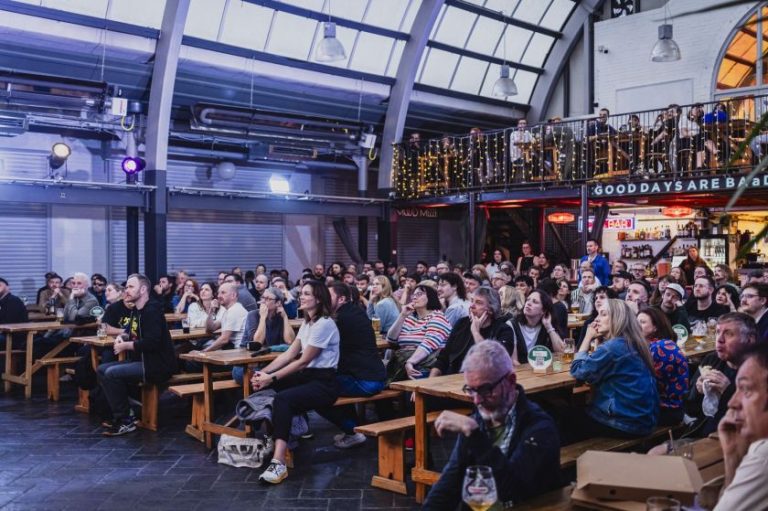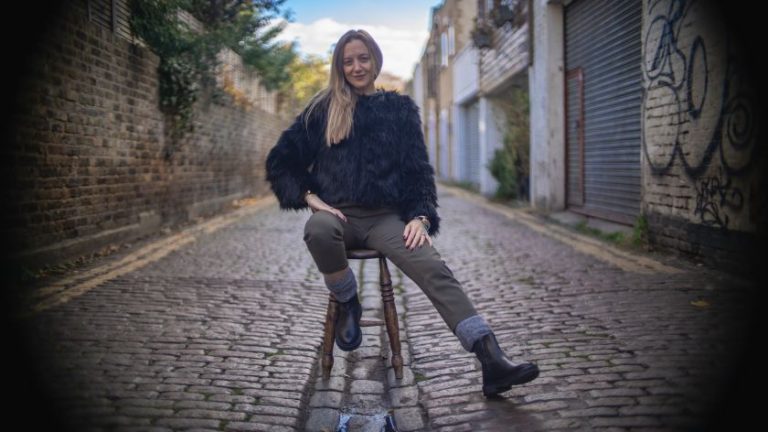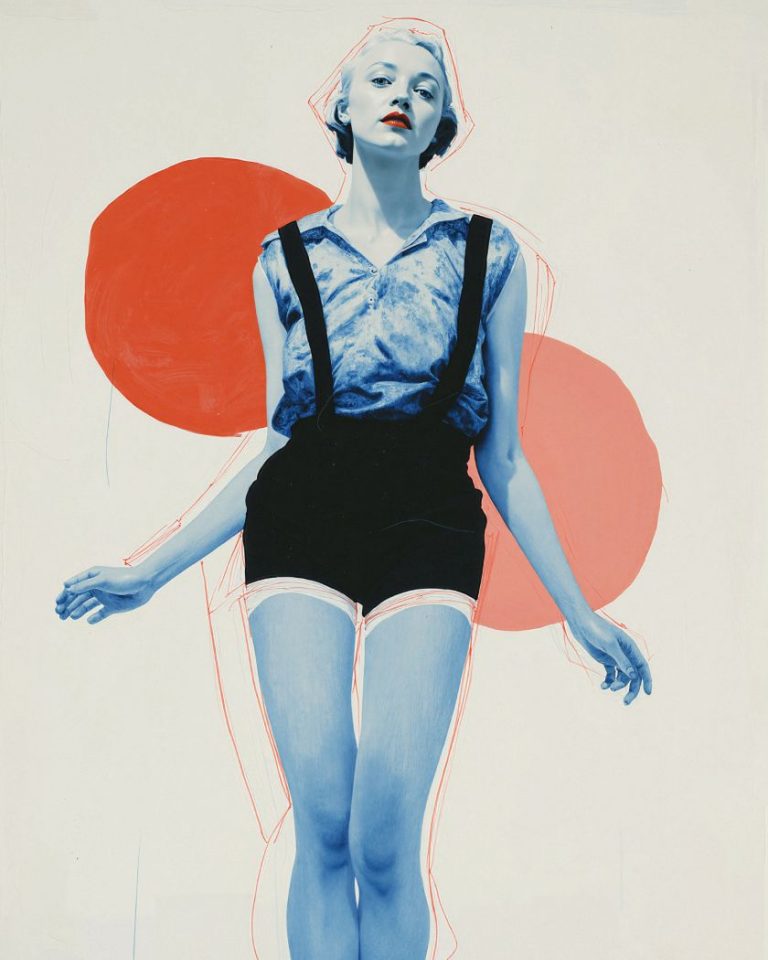Steve has transformed his living room into the world’s tiniest studio, crafting award-winning miniature movie moments with household items and boundless imagination.
In a modest corner of Sheffield, Steve Berry is creating movie magic at miniature scale. It’s a project he began during lockdown—and it’s taken off in a big way.
Steve’s painstakingly detailed recreations of iconic film scenes—from the xenomorphs of Aliens to the post-apocalyptic landscapes of Terminator—have won him awards, thousands of social media followers, and a reputation for extraordinary creativity. All from a platform no bigger than an A3 sheet of paper.
We couldn’t wait to chat with Steve about how he creates these incredible images, his masterful approach to lighting, and how he finds the time and energy while simultaneously working as a graphic designer.
A fire burning inside
“If Covid hadn’t happened, I don’t think I’d have ever discovered this path I’ve taken,” explains Steve. “I thought I was going to be learning product photography for a few weeks, but that idea quickly ran out of steam on the fifth baked bean can. I’ve always loved cinema, so I grabbed some random small Lego sets and thought, ‘Why not create famous movie scenes?'”
That initial experiment has evolved into a prolific body of work spanning over 2,500 unique images since 2020. And what began as a mere diversion has transformed into something much more profound.
“There are few times when I’ve had a fire burning inside me, making me think ‘I was made to do this,'” he explains. “But this has become the thing I feel most passionate about. The satisfaction in creating something that’s real and actually there—to touch and move around, after years of spending my time at a computer—feels so great.”
The mother of invention
It’s not been easy, though. Working on such a small platform presents unique challenges, especially when creating scenes that should appear vast in scale.
“I don’t have a spare room to do this in, so I have to do all my photography from my living room and then pack it all away,” Steve explains. “Creating something that looks large-scale, on that surface size, is no easy task, so I use forced perspective. Using the Father Ted-Dougal system of ‘These cows are small, but those cows are far away,’ you use smaller objects in the distance to create a sense of scale.”
His toolkit includes some unexpected household items, too. “The most surprising accidental discovery I use is foil for water,” he reveals. It works wonders and is very low-budget, but it can be quite effective and makes zero mess. I also use cotton wool for fire and clouds; anything I can get my hands on without it costing anything.”
Theatrical lighting
One of Steve’s signature strengths is his approach to lighting, which transforms these miniature tableaux into dramatic scenes with atmosphere and depth.
“Every photo is different, and I’m trying to capture the feeling of a movie or environment,” he says. “I put myself into the environment I’m creating and think: ‘What’s happening here? What time of day is it? What’s the weather and mood?’, and that sets the story for the type of image I’m trying to create.”
This approach helps Steve transport viewers to fantastical environments despite the physical limits of his workspace. “Creating my own lighting gives me the freedom to go to the desert, be deep in a tropical forest, visit Middle Earth, travel to space—all from the confines of my living room,” he observes. Shooting outside would probably be much easier, but I’m in the UK, so I’d have to do a lot of rain scenes!”
Interpretive approaches
Over the years, Steve’s work has evolved from direct recreations of famous scenes to more interpretive approaches, with each image presenting its own set of challenges.
“There are so many constraints to consider with this type of art,” he notes. “Everything you see, I’ve had to buy, make myself, or find in the kitchen cupboards. Facial expressions are the biggest hurdle—you’re generally set with one expression and have to figure a way to work around that.”
His background as a graphic designer has proven invaluable in facing these challenges. “I approach my photography in a similar way to illustration and design, just in a three-dimensional space,” he explains. Being a graphic designer helps with composition and storytelling. Illustration is something I’ve been into since I was little, so that skill helps me a lot with my lighting and setting the mood.”
Fuelled by feedback
Perhaps most remarkable is the emotional connection Steve’s work has fostered with his audience—something he never anticipated.
“The fan response has been amazing,” Steve says. “It never occurred that this type of work would help people through tough times,” Steve says. “But I have feedback from people even now, saying my work has brought them joy during a bad time and that they look forward to seeing what’s coming next. That type of feedback is priceless to me.”
This connection fuels his creative drive, which shows no signs of waning despite the demanding production schedule of daily posts.
“At no point has this venture ever become tiresome to me,” he stresses. “That’s not to say it’s not hard to do because every day introduces a new challenge. And I don’t get paid to do this either, but it brings me so much joy. The satisfaction of progressing an idea to the finished photo is the best thing ever. Yesterday, something didn’t exist; today, it’s there for all to see. That brings me a great sense of pride.”
In short, after over two decades in the creative industry, Steve has found his true calling and hopes to develop it further. So, what would that look like? “The ideal situation would be for my work to be seen as an art form,” he muses. “I’d love some gallery space, photo books, paid opportunities to progress, to get better equipment, a proper workspace, and to show more people what I can do, with just a bit of foil and an old twig from the garden.”
His positivity and enthusiasm inspire other creatives who feel stuck or hesitant to try something new. If that’s you, he urges, “Just go for it! You have nothing at all to lose by trying something new. In this disappointing day and age, when everything is digital and companies are using AI, I think it’s important to experiment and offer something a bit different.”
The joy of niche
Ultimately, Steve’s work stands as a testament to the power of creative reinvention and the magic that can happen when passion meets perseverance. “‘Niche’ seems to be used as a negative word,” says Steve. ‘But what’s wrong with being niche? It means that you have something unique to offer. Creativity is your own visual voice, just like with singers. We instantly recognise a Tina Turner or Lady Gaga song; I think it’s important to have a visual style of your own, too.”
For Steve, that style is nothing if not distinctive. Characterised by tiny figures, household materials and boundless imagination, his work proves that sometimes the smallest stages can showcase the biggest creative visions.










